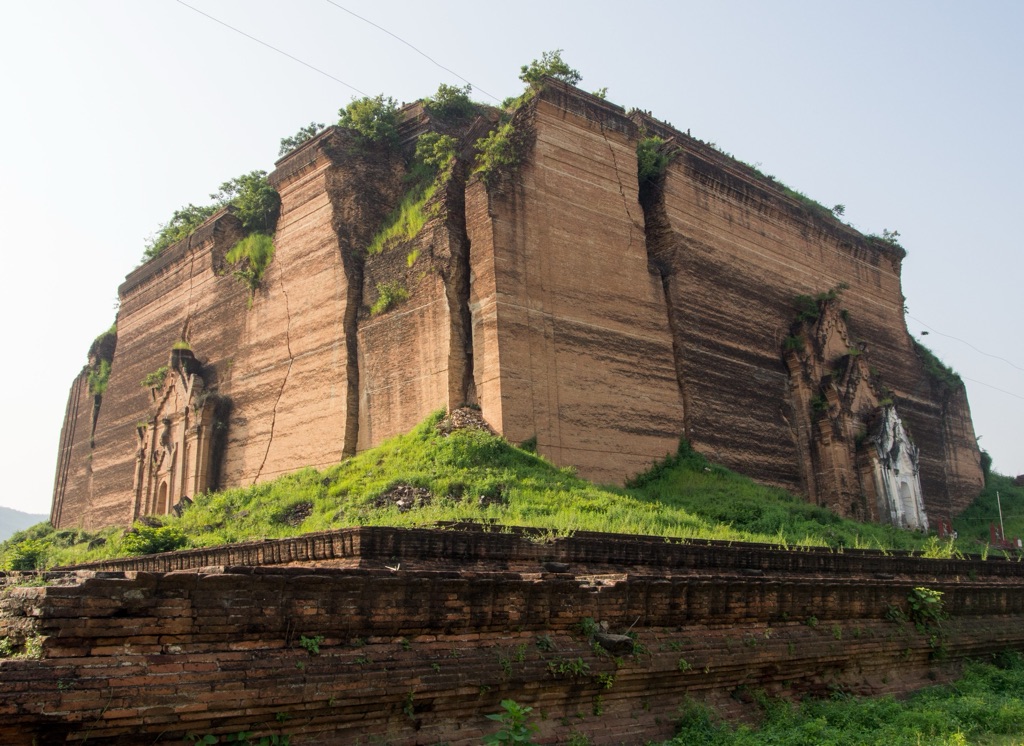Summary
Introduction to Mingun Pahtodawgyi
The Mingun Pahtodawgyi stands as an iconic monument in Myanmar, reflecting a blend of history, culture, and architectural grandeur. Originally envisioned by King Bodawpaya in the late 18th century, this incomplete stupa would have been the world’s largest, but construction ceased after the king’s death. Despite its unfinished state, the structure commands attention, with vast dimensions and the unique cracks caused by an earthquake in 1839. Situated on the western bank of the Irrawaddy River, it is accessible by a pleasant boat ride from Mandalay, adding to the allure of this historical site.
Get your dose of History via Email
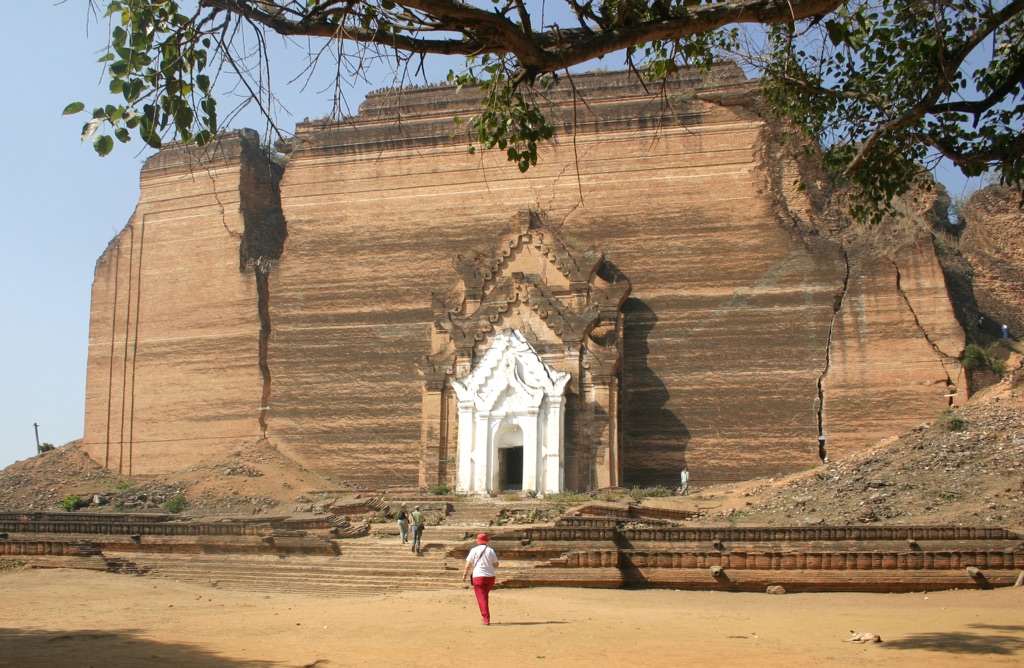
Architectural Significance of Mingun Pahtodawgyi
The Mingun Pahtodawgyi is revered not only for its intended scale but also for its remarkable construction techniques. The use of brick and lime mortar reflects the architectural innovation of its time. Visitors can marvel at the massive lion statues that guard the stupa, known as Chinthe, which have become symbols of protection in Burmese culture. The nearby Mingun Bell, crafted to complement the stupa, adds to the site’s spiritual resonance. Despite the ravages of time, the grandeur of the Pahtodawgyi continues to draw the admiration of historians, architects, and tourists alike.
Cultural Impact and Tourism Appeal
Mingun Pahtodawgyi is not just a relic of the past; it plays a significant role in the cultural life of the region. It offers a glimpse into the ambitious projects of Myanmar’s ancient kings and serves as a backdrop for local festivities and rituals. As a tourist destination, the site offers a rich experience, combining breathtaking views, photogenic landscapes, and a chance to immerse oneself in Myanmar’s deep spiritual heritage. It stands out as a destination for travelers seeking to understand the historical and cultural fabric of this Southeast Asian country.
Historical Background of Mingun Pahtodawgyi
The Dream of King Bodawpaya
The saga of Mingun Pahtodawgyi began in 1790, orchestrated by King Bodawpaya of the Konbaung Dynasty. The king envisioned a grand pagoda, designed to be the largest in the world. Bonds between the king and his people grew stronger during the construction. Teams of thousands, including prisoners of war, worked tirelessly. The aim was to create a symbol of both the king’s religious devotion and his might. Unfortunately, the project halted abruptly due to an ominous prophecy. It foretold national turmoil if the temple completed.
Construction Techniques and Design
Even in its unfinished state, Mingun Pahtodawgyi showcases remarkable construction techniques of the era. Craftsmen used enormous bricks and a unique mortar. This mixture involved sand, lime, and the sap from sugar palms. It’s said that this method made the structure earthquake-resistant to a certain extent. The design incorporated huge chambers within. These were to serve as housing for an immense statue of Buddha. While the chambers now lie empty, the sheer scale invokes awe among those who roam their confines.
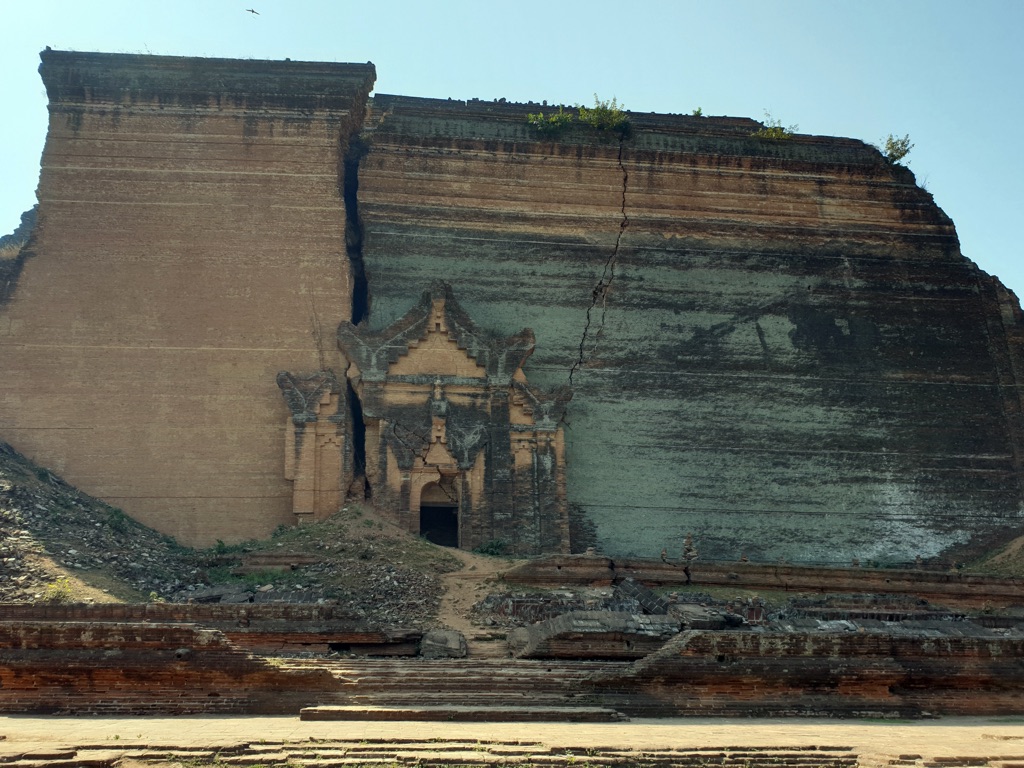
Earthquake and the Unfinished Monument
In 1839, a severe earthquake hit the region, leaving the Mingun Pahtodawgyi heavily damaged. Huge fissures scarred the monument but its base remained. The quake triggered the abandonment of any further attempts to complete the pagoda. To this day, the cracks serve as a stark reminder of nature’s power. Locals and visitors find beauty in its imperfection. As a result, the Mingun Pahtodawgyi is revered not only for its history but also for its resilience.
Myth and Symbolism
Mingun Pahtodawgyi is steeped in myth and symbolism. Legend has it that the massive structure could communicate with its twin, the Giza pyramids of Egypt. It’s also home to the Mingun Bell, the world’s second-largest ringing bell. Its tone carries deep cultural significance, said to represent the voice of Buddha. Each detail of Mingun Pahtodawgyi is imbued with deep religious meaning. It is a vivid testament to Burma’s rich spiritual heritage.
Current Cultural Relevance
Today, Mingun Pahtodawgyi holds great cultural relevance. It is an important pilgrimage site for Buddhists. It also symbolizes the artistic feats of the ancient Burmese. Festivals light up the area yearly, reflecting the local community’s vibrant culture. Tourists flock to the site to behold the grandeur of this historic edifice. Mingun Pahtodawgyi thus endures as a monument of both the past and the present. It merges history, legend, and religion into one monumental experience.
The Discovery of Mingun Pahtodawgyi
Initial Encounters with the Pagoda
The grand Mingun Pahtodawgyi, though well-known to the locals of Mingun for centuries, drew international attention during the British colonization of Burma in the early 19th century. British explorers and colonial officials, fascinated by Burmese culture and history, stumbled upon the massive unfinished stupa during their governance. It was through their documentation that word of the gigantic structure spread to the wider world, generating interest and intrigue among historians and travelers alike.
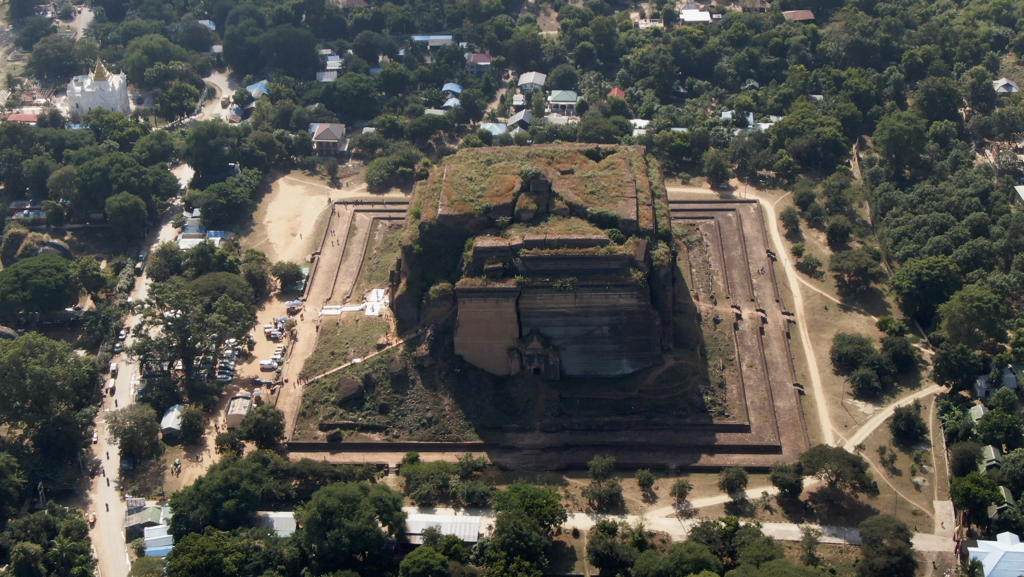
The Incomplete Giant of the East
Captains and traders navigating the Irrawaddy River frequently reported sightings of the enormous edifice in their logs. Over time, curiosity grew, leading to more detailed examinations. The massive dimensions of the Mingun Pahtodawgyi astonished Western visitors, with many sketching and describing the pagoda in their travel memoirs. Through these accounts, the pagoda became an emblem of the architectural ambition and might of the bygone Burmese kingdom.
Archaeological and Historical Insights
The British efforts to map and understand Burmese heritage led to more systematic studies of Mingun Pahtodawgyi. Archaeologists examined the stupa’s bricks, inscriptions, and structural design, piecing together its historical timeline. They concluded that King Bodawpaya initiated its construction around 1790, with the intent of creating a monument of unmatched scale. These insights deepened the appreciation for the pagoda’s historical significance among scholars globally.
The Mingun Bell Discovery
Accompanying the discovery of the pagoda was the unearthing of the Mingun Bell, suspended nearby. Weighing several tons, the bell was regarded as a masterpiece of Burmese craftsmanship. It was initially intended to complement the vast stupa and serve a ceremonial role. Explorers realized the bell was more than an artifact; it was a resonant piece of Burmese spiritual life, connecting the pagoda to the religious practices of the locals.
Cultural Renaissance and Preservation Efforts
Following its rediscovery, the Mingun Pahtodawgyi and its colossal bell became key subjects of preservation efforts, undertaken both by local authorities and international organizations. The site gradually transformed from an object of colonial curiosity to a symbol of Burmese cultural pride. Today, preservationists work to maintain both the tangible structure and the intangible lore that surrounds this unique heritage site, ensuring that it continues to inspire future generations.
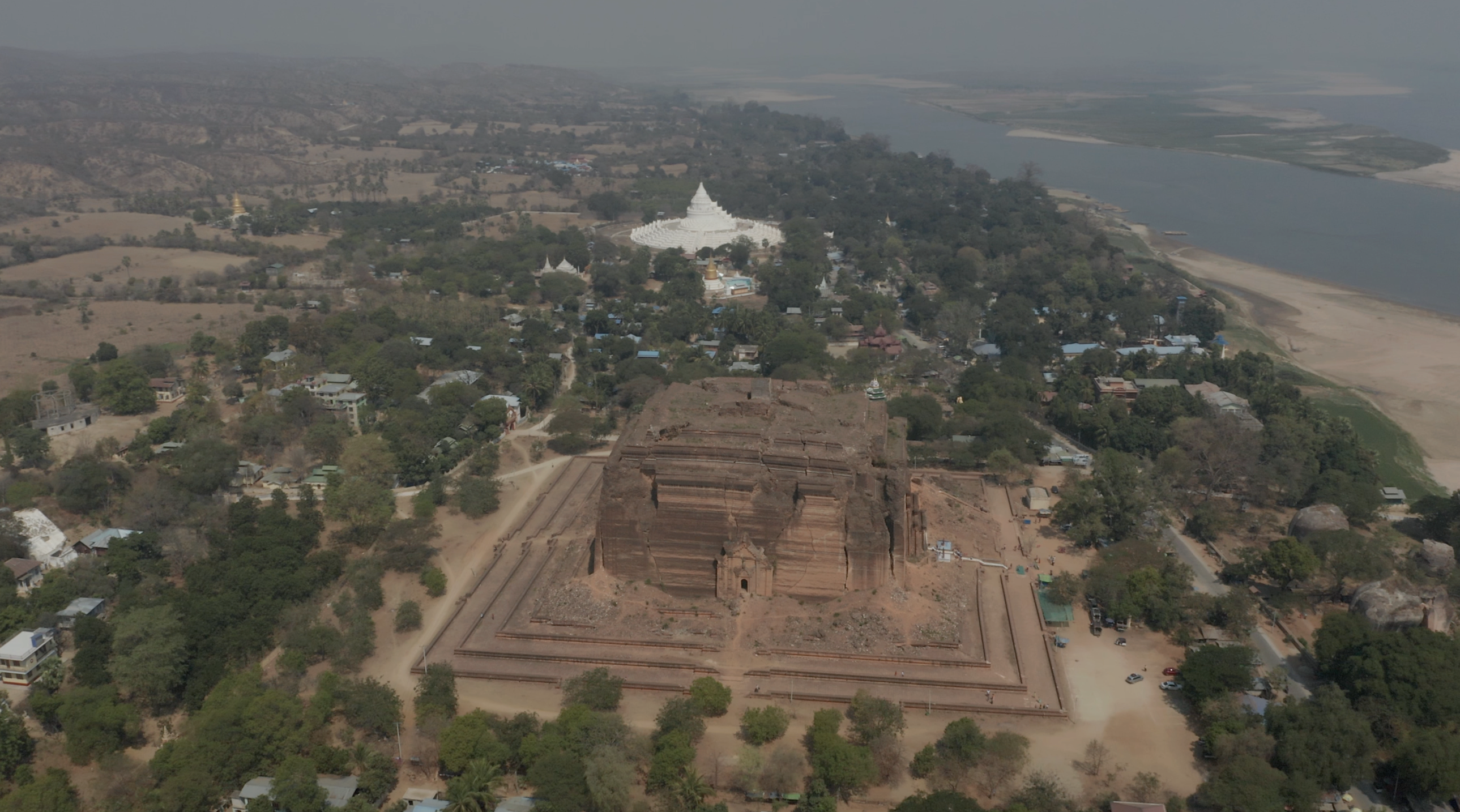
Cultural Significance, Dating methods, Theories and Interpretations
Cultural Emblem of Burmese Sovereignty
Mingun Pahtodawgyi stands as an enduring icon of Burmese culture and history. It represents the religious devotion and the political power of the Konbaung Dynasty. Local folklore and Buddhist practices imbue the site with spiritual significance. Ceremonies and annual festivals take place here, celebrating the enduring legacy of Burmese artistic and spiritual expressions.
Exploring the Past: Dating the Mingun Pahtodawgyi
Historical records place the commencement of Mingun Pahtodawgyi’s construction in the late 18th century. However, the exact chronology of its construction has been refined with modern techniques. These include comparative architectural studies and the analysis of organic materials found within the bricks and mortar. They offer a precise timeline of the pagoda’s inception and its subsequent halt, illuminating the historical context of its origin.
Theories Behind the Unfinished Stupa
Scholars have put forth several theories regarding the cessation of Mingun Pahtodawgyi’s construction. Some point to an ancient prophecy that the completion of the temple would herald the king’s death. Others argue that political upheavals and resource constraints might have played a practical role. These theories reflect the interplay between myth and reality that characterizes the site’s history.
Understanding the Architectural Language
Varying interpretations of the Mingun Pahtodawgyi’s architecture have revealed insights into its significance. Some view the colossal dimensions as an embodiment of the universe according to Buddhist cosmology. Others interpret the structure’s imposing presence as a political statement of might and power. These diverse interpretations enrich our understanding of the pagoda and its multifaceted role in Burmese society.
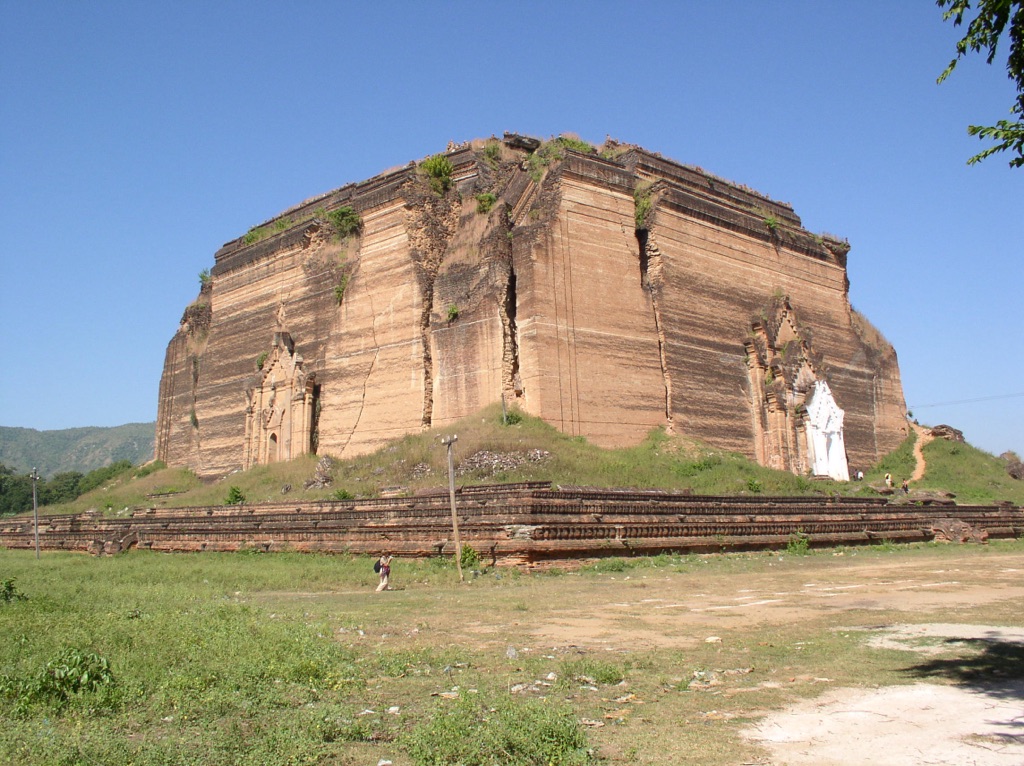
Revisiting the Mingun Bell: A Symbolic Companion
The interpretation of the neighboring Mingun Bell has also contributed to the overall understanding of the site’s significance. The bell, originally cast to serve the unfinished stupa, has become a cultural artifact in its own right. Its presence at the site resonates with the interconnection between the tangible and the spiritual. It signifies the unity of purpose that the pagoda and the bell were intended to fulfill.
Conclusion and Sources
In summary, Mingun Pahtodawgyi is a site that encapsulates the grandeur of Myanmar’s past and the enduring spirituality of its people. Although never completed, it remains an awe-inspiring structure that offers a unique glimpse into Burmese history, culture, and religion. The myriad of scholarly theories and interpretations only add to its mystique, inviting visitors and researchers to further explore its origins and meanings. As a cultural touchstone, the Mingun Pahtodawgyi continues to hold significant value and exerts a powerful influence on the local community and its traditions.
For further reading and to validate the information presented in this article, the following sources are recommended:
Or you can check any of these reputable archaeological and historical texts:
Myanmar’s Department of Archaeology, National Museum, and Library. (2020). ‘Mingun Pahtodawgyi: The Great Monument of King Bodawpaya’s Ambition.’ Yangon: Ministry of Religious Affairs and Culture.
Strachan, P. (2018). ‘Uncovering Mingun: History and Myth.’ Journal of Southeast Asian Studies, 49(2), 234-256.
Sun, H., & Khine, M. (2019). ‘Analysis of Brick Samples from Mingun Pahtodawgyi for Conservation Purposes.’ Journal of Cultural Heritage Management and Sustainable Development, 9(3), 325-340.
Tin, M. M. K. (2015). ‘Myanmar Architecture: Understanding the Golden Land.’ Mandalay: Mandalay Historical Society.
Win, Z. (2021). ‘Bells and Gongs: The Acoustic Heritage of Myanmar.’ Southeast Asia Research, 29(1), 45-63.

